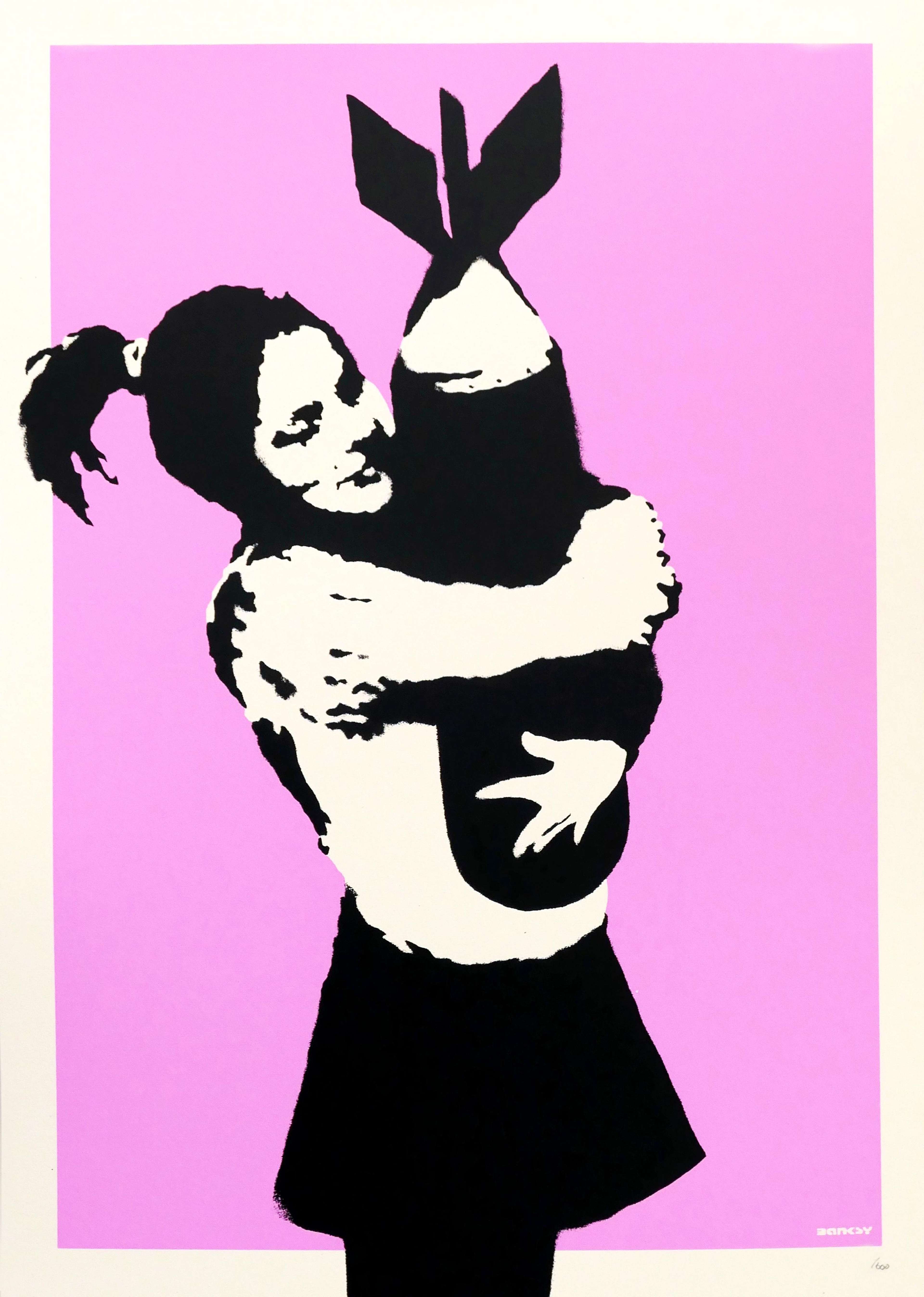 Bomb Love © Banksy 2003
Bomb Love © Banksy 2003
Banksy
269 works
A Banksy print that straddles the artist's interest in the contrast between love and war, Bomb Love has become a particularly poignant motif.
To learn more about the Banksy's original artwork and its message, see our 10 facts here:
When was Bomb Love (Bomb Hugger) created?
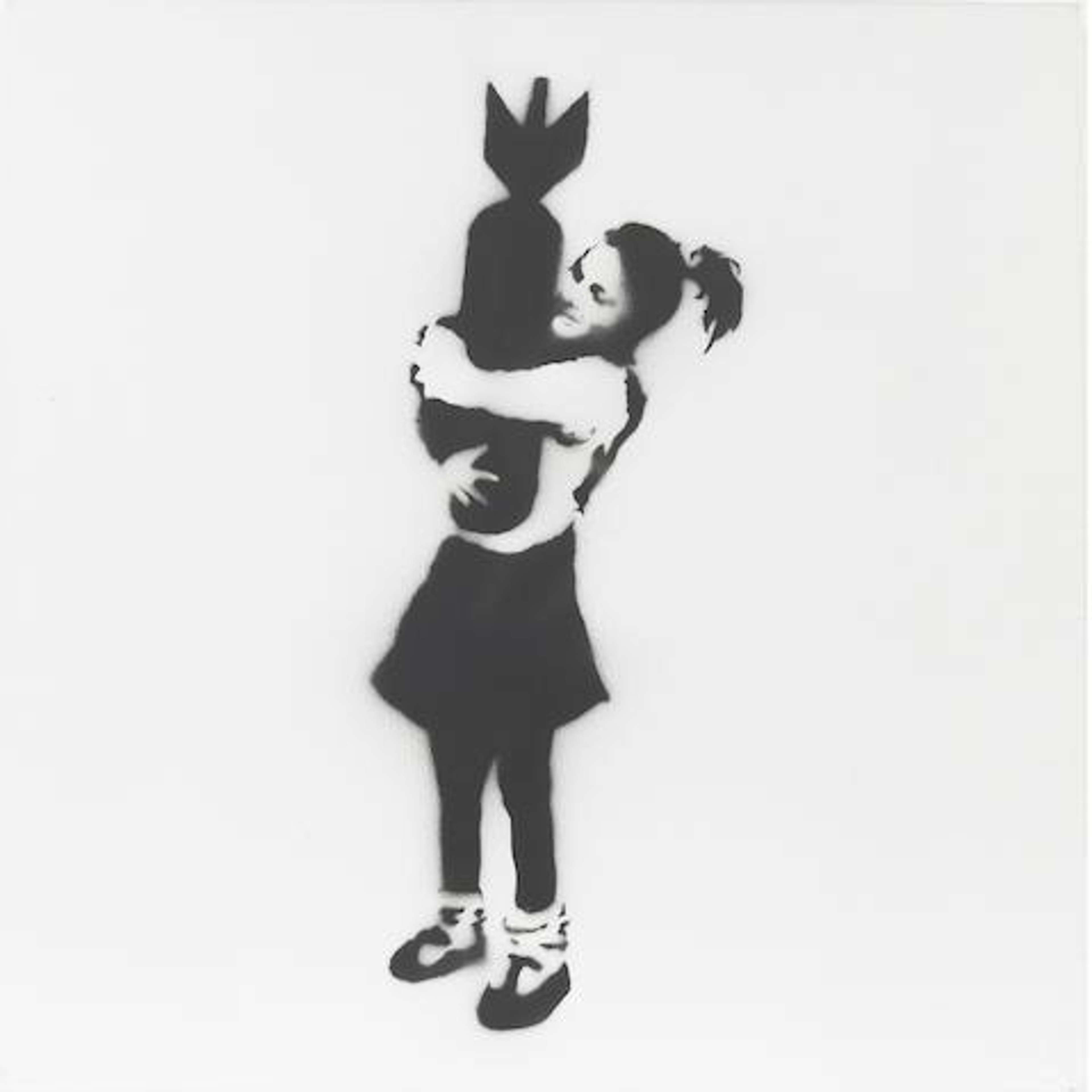 Bomb Love © Banksy 2002
Bomb Love © Banksy 2002The original Bomb Love mural appeared in East London in 2001 as a black-and-white stencil that has become synonymous with Banksy’s name. Underneath was Banksy’s now-iconic tag. At the time, Banksy had yet to find notoriety as a street artist, but his work was beginning to get noticed (this 2003 Guardian review offers an amusing dose of nostalgia). In 2003, the same stencil of Bomb Love appeared on the streets of Brighton and Hamburg, Germany.
Bomb Love isn’t the artwork’s only name
 Bomb Hugger © Banksy 2003
Bomb Hugger © Banksy 2003Originally, Banksy named the work Bomb Love. But over time, the public adopted the name Bomb Hugger instead. Bomb Love more accurately reflects the message Banksy wanted to capture in the piece, but Bomb Hugger is arguably more provocative.
The artwork continues Banksy’s anti-war theme
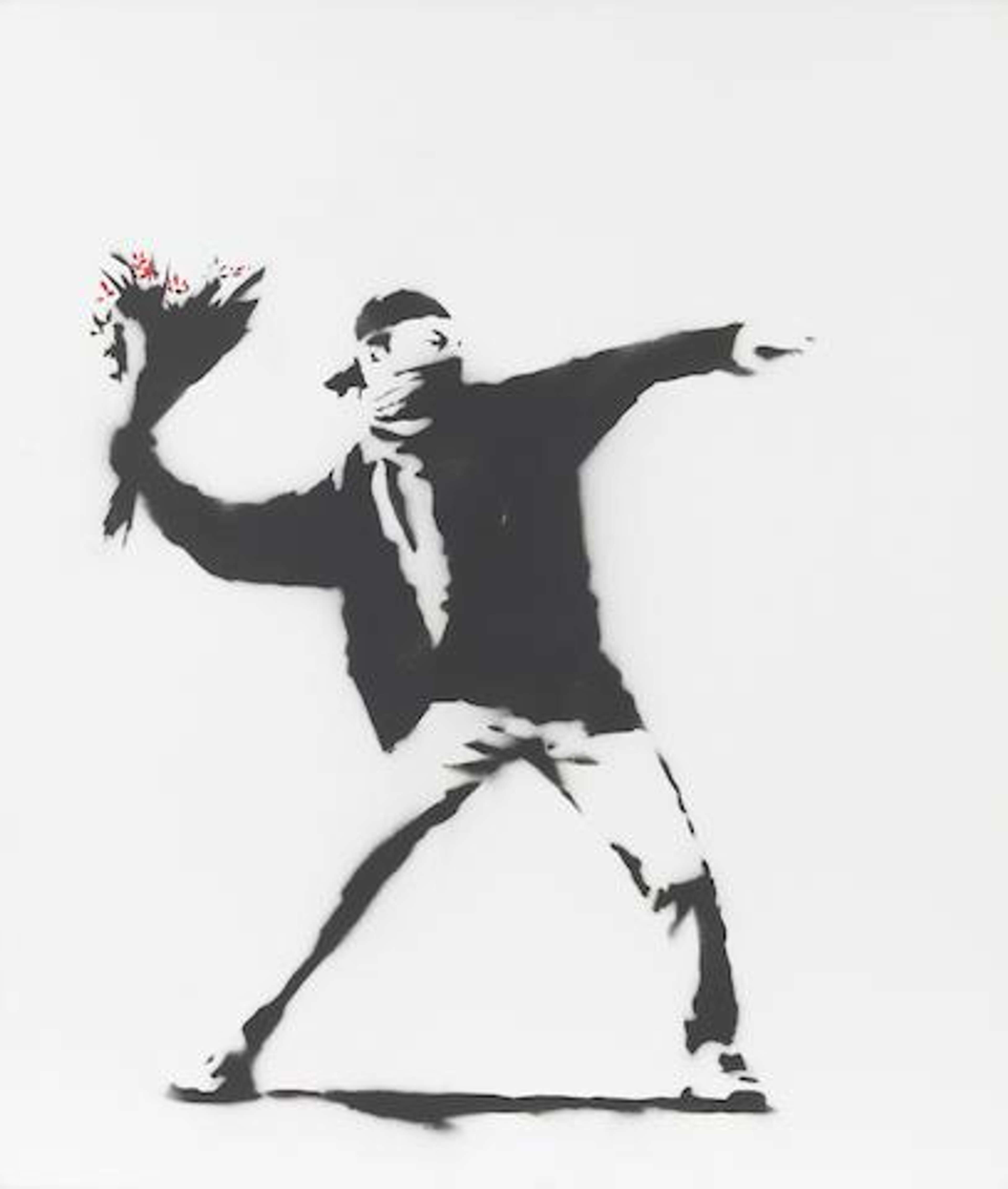 Love Is In The Air © Banksy, 2005
Love Is In The Air © Banksy, 2005In May 2001, Banksy held an unofficial exhibition of his work in a tunnel on Rivington Street, London, following a bet with a group of friends.
He produced 12 stencils for the show, each one with an anti-war message, including monkeys with guns, bombs over Big Ben, army tanks next to playing children, and a version of the now-famous Love Is In The Air (flower thrower). Bomb Love appeared two years after the show, and Banksy would continue to return to this anti-war message in later murals and prints.
What is the meaning of Bomb Hugger by Banksy?
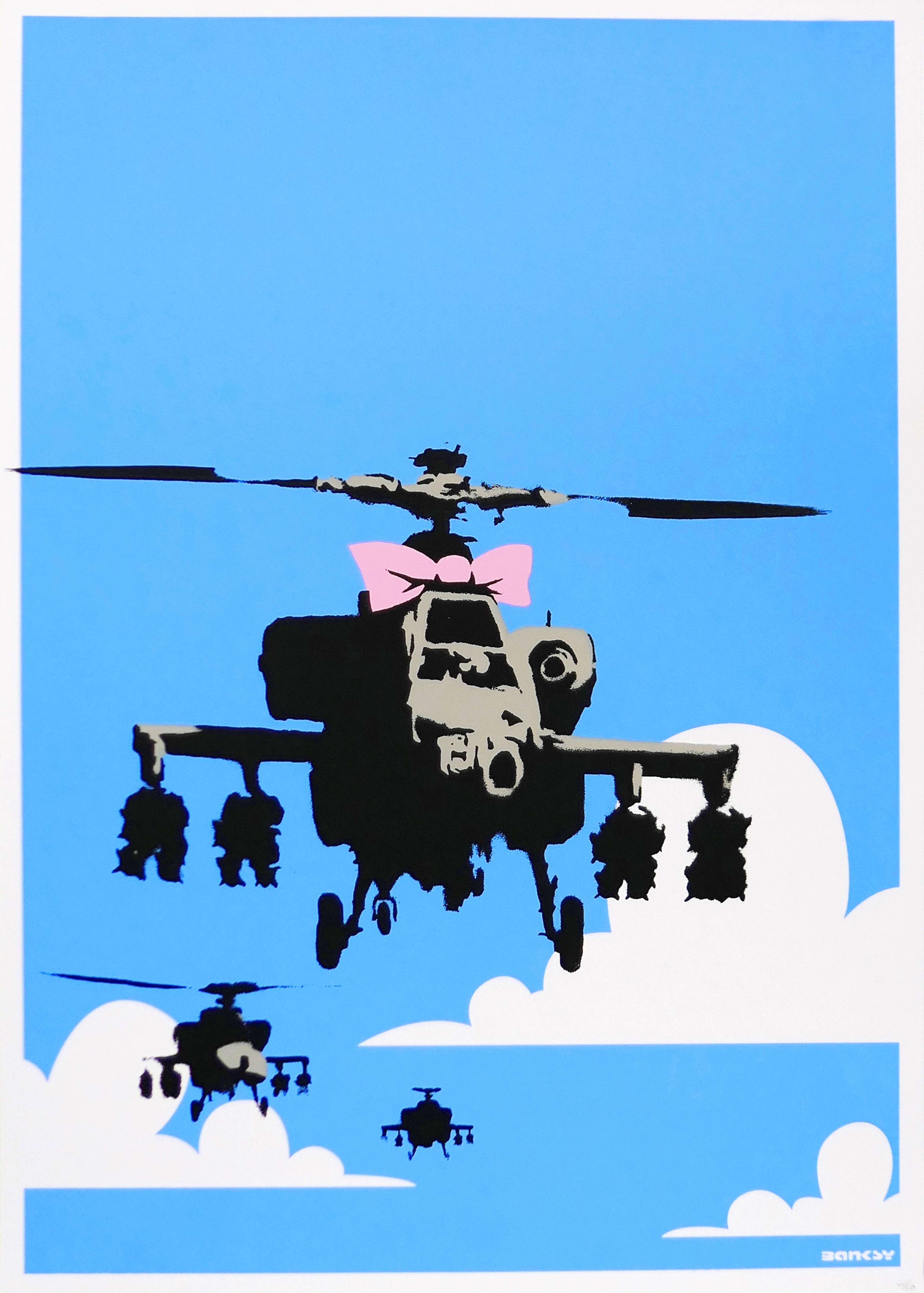 Happy Choppers © Banksy 2003
Happy Choppers © Banksy 2003Banksy’s mission in creating Bomb Love was to dispel the illusions portrayed by the media that war is a beneficial and a necessary part of democracy – the act of an innocent child hugging a missile both symbolised the apparent affection for warfare that the public was encouraged to have, and also exaggerated the contrast between peace and war.
The sight of someone so vulnerable being so close to danger was intended to make the viewer feel uneasy. But, Bomb Hugger also has an alternative, more uplifting message: that love can conquer all and war can be overcome, or subdued, by goodness. As Banksy wrote in his 2004 book Cut It Out, “Suicide bombers just need a hug”.
Banksy has also explored the contrast between war and innocence in other works, such as Happy Choppers.
Bomb Love was reproduced for anti-war protest placards
 The placard appears in Banksy's art, as a motif, as well being his end product elsewhere. (Placard Rat (Welcome to Hell) © Banksy 2004)
The placard appears in Banksy's art, as a motif, as well being his end product elsewhere. (Placard Rat (Welcome to Hell) © Banksy 2004)Banksy created a set of placards on the theme of Bomb Love for a protest against the Iraq War in 2003 in Bristol, the artist’s hometown. Most of the placards were discarded after the event, but one was sold in 2017 for £10,000 by an auction house in Suffolk.
When was Bomb Love released as a screen print?
 Bomb Hugger © Banksy, 2002
Bomb Hugger © Banksy, 2002The Bomb Love screen prints were released in 2003, also coinciding with the protests across the UK against the invasion of Iraq, Pictures on Walls, Banksy’s UK-based printing house at the time, released 750 prints in total: 150 signed, and 600 unsigned. These screenprints differed from the original mural in that they had a bubblegum pink background, which drew further attention to the age and innocence of the little girl pictured.
How many variations of Bomb Love are there?
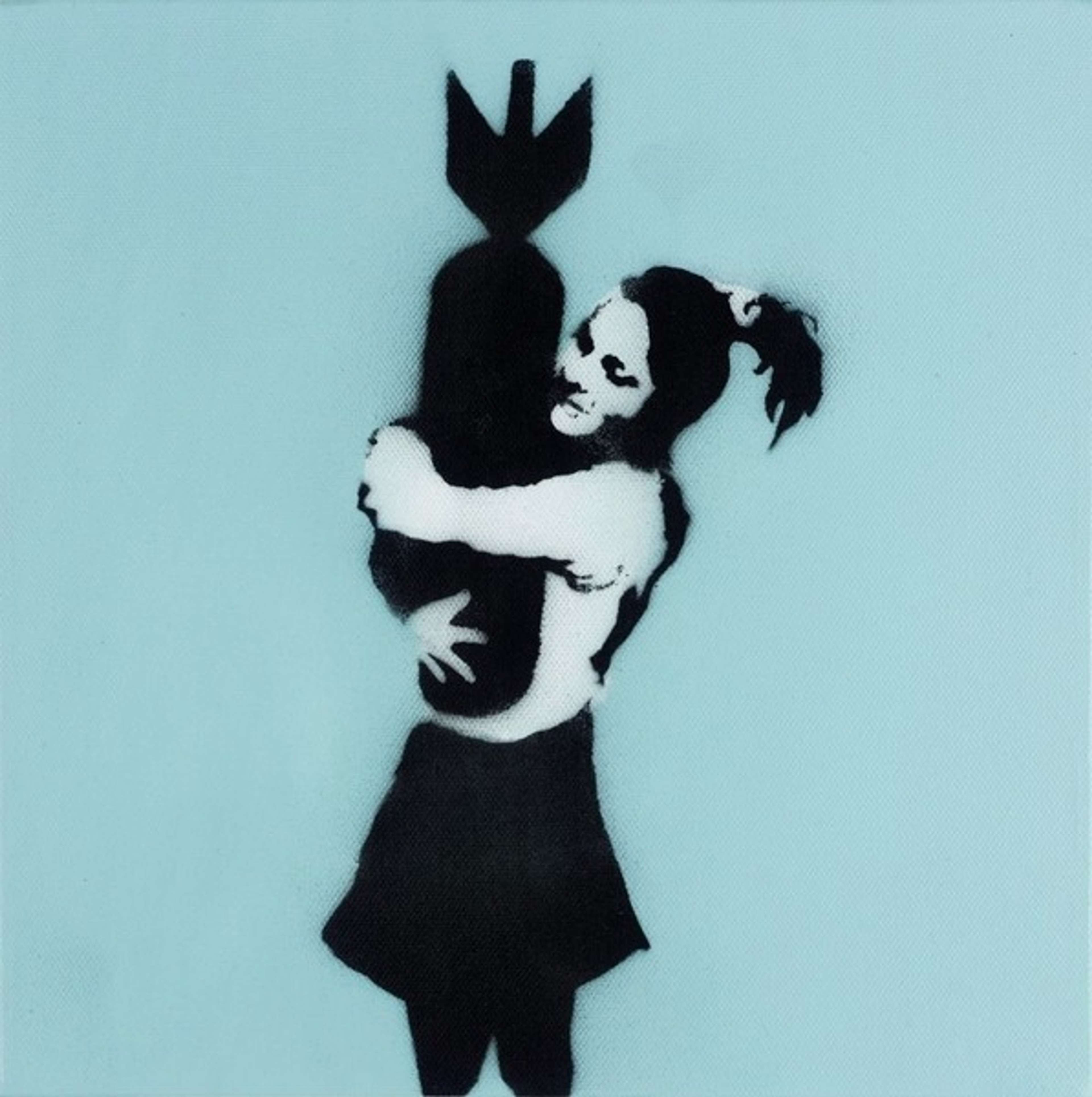 Bomb Hugger (blue background) © Banksy
Bomb Hugger (blue background) © BanksyThere are three variations on Banksy's Bomb Love, differing primarily in colour, though not all three are available as prints. In addition to the Bomb Love screen print with a pink background, Banksy has also created an original with a blue background, where the little girl is looking towards the left, instead of right. A monochrome original of Bomb Love depicts the girl in full length, wearing white socks and Mary Jane shoes.
In 2003, Banksy created another mural of a girl with a bomb in Brighton, featuring a little girl holding an ice cream cone with a stick of dynamite instead of a chocolate flake.
How much is Banksy's Bomb Love worth at auction?
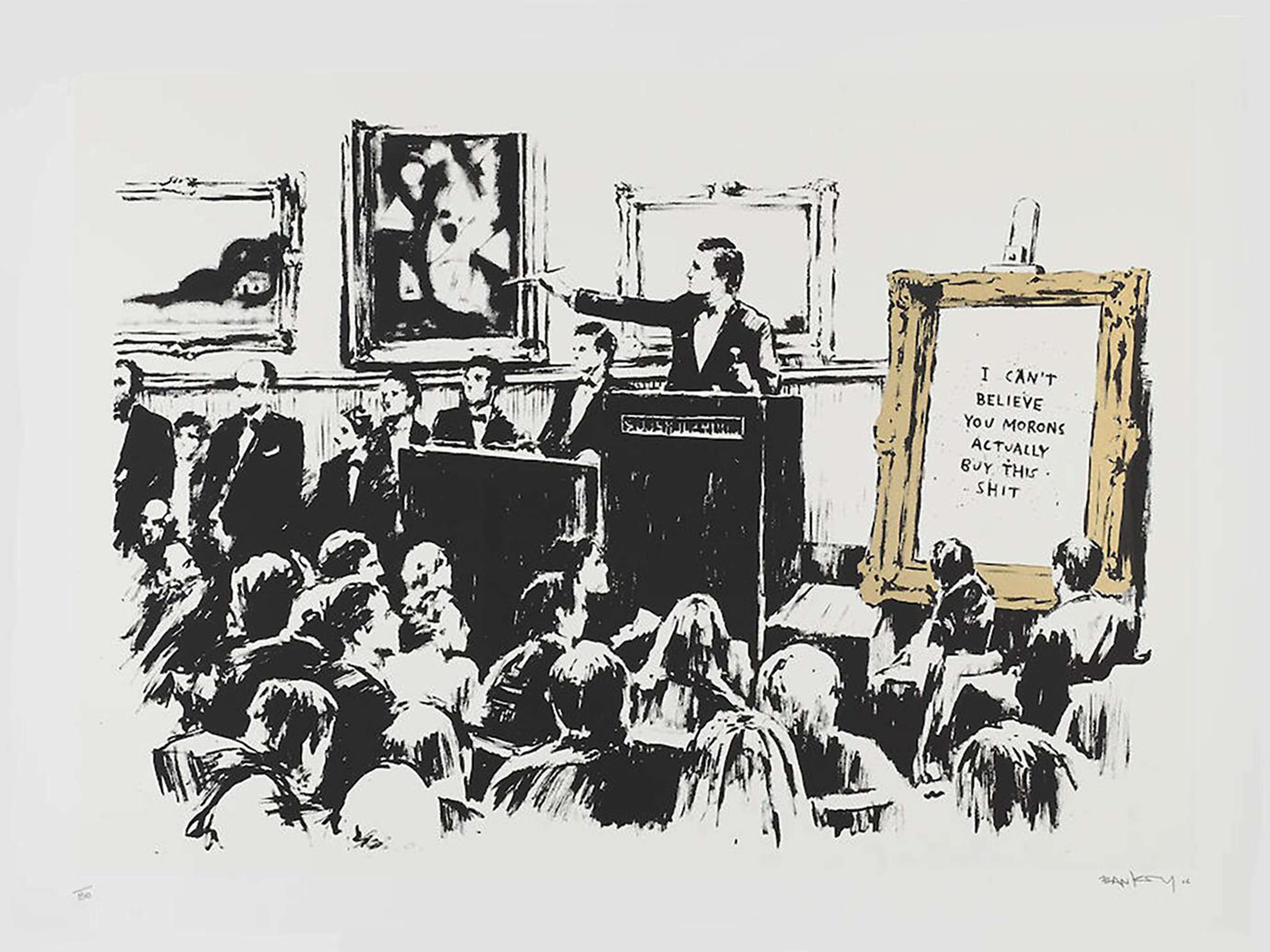 Morons (LA Edition, White) © Bansky 2007
Morons (LA Edition, White) © Bansky 2007As one of Banksy’s earliest prints, Bomb Love is now highly sought-after on the secondary market. Banksy's Bomb Hugger's price has appreciated massively since Banksy published the edition in 2003. It demonstrates the clean stencil style that Banksy collectors know and love, and, as such, its value only continues to grow. The current highest auction price paid for an edition of Bomb Love (Bomb Hugger) (2003) is GBP £129,000 at Forum Auctions, London (2020).
Bomb Love was featured in Banksy’s 2006 book Wall and Piece
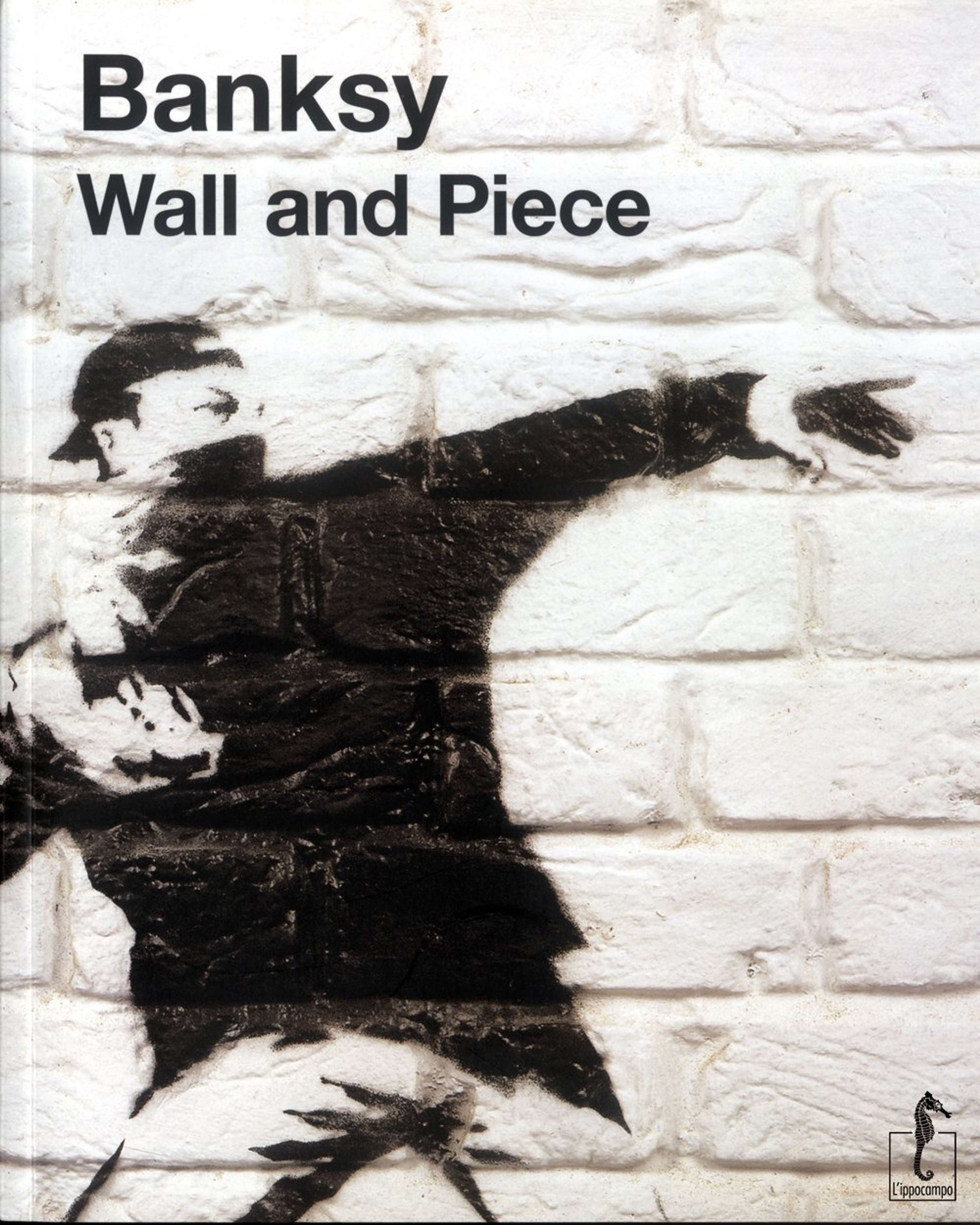 "Banksy, Wall and Piece" by Thomas Hawk is licensed under CC BY-NC 2.0.
"Banksy, Wall and Piece" by Thomas Hawk is licensed under CC BY-NC 2.0.The artwork was placed alongside a caption that read, “It takes a lot of guts to stand up anonymously in a western democracy and call for things no-one else believes in – like peace and justice and freedom.” While it may be an overstatement to say that "no-one else" believes in peace, it is precisely the assumptions we make about living in a humane and caring society that Banksy subverts, challenging our conceptions of care by selecting a combination of imagery designed to disturb our sense of justice as much as possible, as proven by the meeting of child and bomb in Bomb Hugger.
Why does Banksy use children in his art?
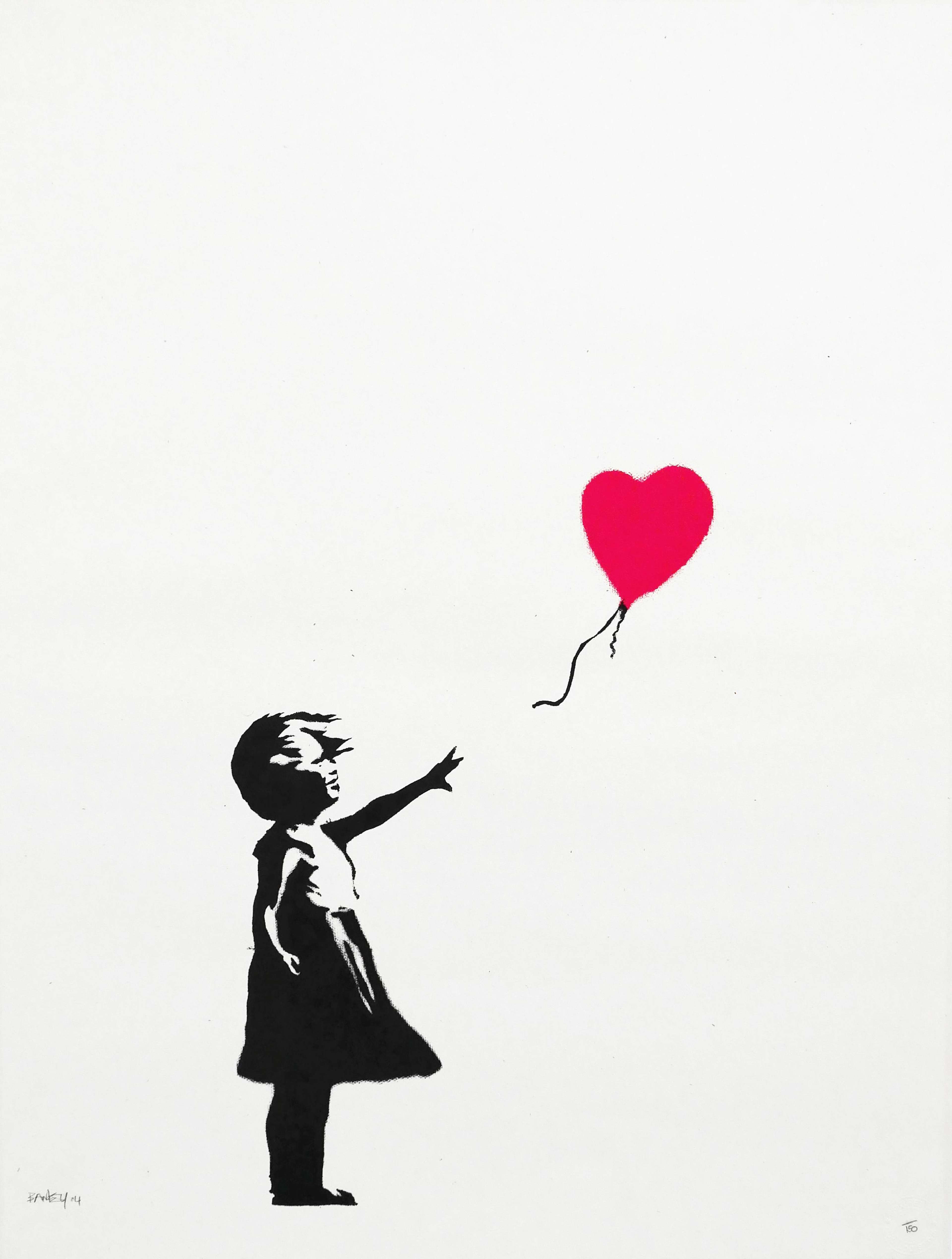 Girl With Balloon © Banksy 2004
Girl With Balloon © Banksy 2004Banksy has always been unafraid of tackling tough subjects head-on. By incorporating children, Banksy intensifies the impact of his artwork by contrasting innocence with conflict and tragedy: in Very Little Helps, the consequences of capitalism and materialism are made more meaningful when connected to children, while in Girl With Balloon, the little girl heightens the emotions of love, loss and hope.
